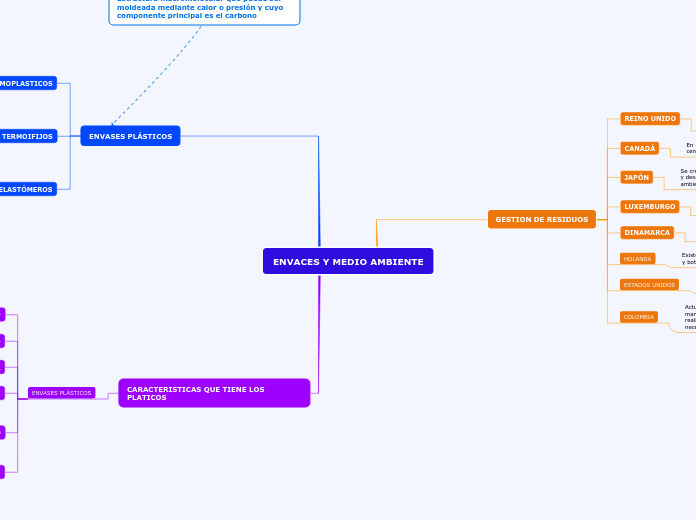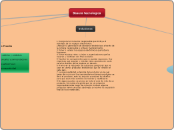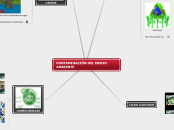Estructura macromolecular que puede ser moldeada mediante calor o presión y cuyo componente principal es el carbono
ENVACES Y MEDIO AMBIENTE
In linguistics, syntax is the set of rules, principles, and processes that govern the structure of sentences in a given language, usually including word order.
CARACTERISTICAS QUE TIENE LOS PLATICOS
A compound sentence is a sentence that has at least two independent clauses joined by a comma, semicolon or conjunction. An independent clause is a clause that has a subject and verb and forms a complete thought.
BAJO COSTO
Attributive clauses serve as an attribute to a noun (pronoun) in the main clause. This noun or pronoun is called the antecedent of the clause.
En relación a otros materiales su materia prima es relativamente económica
RESISTENCIA AL IMPACTO
An adverbial clause is a group of two or more words that function as an adverb in a sentence.
Por su naturaleza tiene buena resistencia al impacto y puede ser mejorada mediante aditivos
We couldn't park anywhere near the park.
ALTA RESISTENCIA A CORROCION
An appositive clause follows another noun or noun phrase in apposition to it; that is, it provides information that further identifies or defines it.
Sus características prestan buena resistencia a la humedad soluciones salinas
RESISTENCIA A FATIGA
Buen comportamiento cunado son sometidos a esfuerzos de fatiga como dobles
ALTA FLEXIBILIDAD
Pueden soportar grandes esfuerzos mecánicos sin sufrir fracturas
MUY BAJA DENSISDAD
Presentan baja densidad respecto a otros materiales
ENVASES PLÁSTICOS
A complex sentence is a sentence that contains an independent clause and one or more dependent clauses.
An independent clause can stand alone as a sentence, but a dependent clause even though it has a subject and a verb cannot stand alone.
ELASTÓMEROS
The subject clause is a dependent clause that acts as a subject.
Pueden estirarse 10 veces su longitud y luego recuperar su forma original
Son polímeros de extrema extensibilidad elástica
POLIMEROS TERMOIFIJOS
A predicative clause may be introduced by conjunctions - that, whether, whether... or, as, as if, as though, because, lest, the way - or connectives.
The latter may be conjunctive pronouns - who, whoever, what, whatever, which - or conjunctive adverbs - where, wherever, when, whenever, how, why.
Con calentamiento, se ablandan y fluyen para ser moldeados
Son aquellos que no toleran ciclos repetidos de calentamiento como lo hacen los termoplásticos
POLIMEROS TERMOPLASTICOS
The object clause is a phrase on which a verb performs an action. It falls at the end of a sentence, and is governed by a verb or a preposition.
conformación facil y economica
Este tipo de polímero son materiales sólidos a temperatura ambiente, pero a mayor temperatura se convierten en líquidos
GESTION DE RESIDUOS
COLOMBIA
Actualmente en el país no tiene sistemas apropiados para el manejo de residuos incluyendo su disposición final, se han realizado algunos esfuerzos empresariales pero se hace necesario la reglamentacion especifica respecto a los envases
ESTADOS UNIDOS
Tienen estrictas regulaciones que controlan la contaminación de las aguas, aire y suelos.
HOLANDA
Existe una ley que exge la disposicion obligatoria de aluminio y botellas plasticas y envases de vidrio.
DINAMARCA
See the example below and try to create your own simple sentences.
Tim is driving the red car.
Desde 1991 el Gobierno promueve la gestión de residuos incrementando un 70% con recuperacion de energia
LUXEMBURGO
See the example below and try to create your own simple sentences.
Tim is driving the car with his mother.
Fomenta plantas de reciclaje y obliga a los comerciantes a utilizar la mayor cantidad de envases de tipo reutilizables
JAPÓN
See the example below and try to create your own simple sentences.
Tim is the driver.
Se crea la ley de prevención de la contaminación de las aguas y desastres marinos promoviendo la protección del medio ambiente.
CANADÁ
See the example below and try to create your own simple sentences.
Tim drives the car.
En 1989 se crea la brigada especial de apoyo en las tareas centradas en actividades de reuso y reciclaje de residuos
REINO UNIDO
See the example below and try to create your own simple sentences.
Tim drives.
Se introdujo en 1990 la ley de papel blanco, fue el primer paso de una serie de medidas tomadas referente a cuestiones de medio abiente









